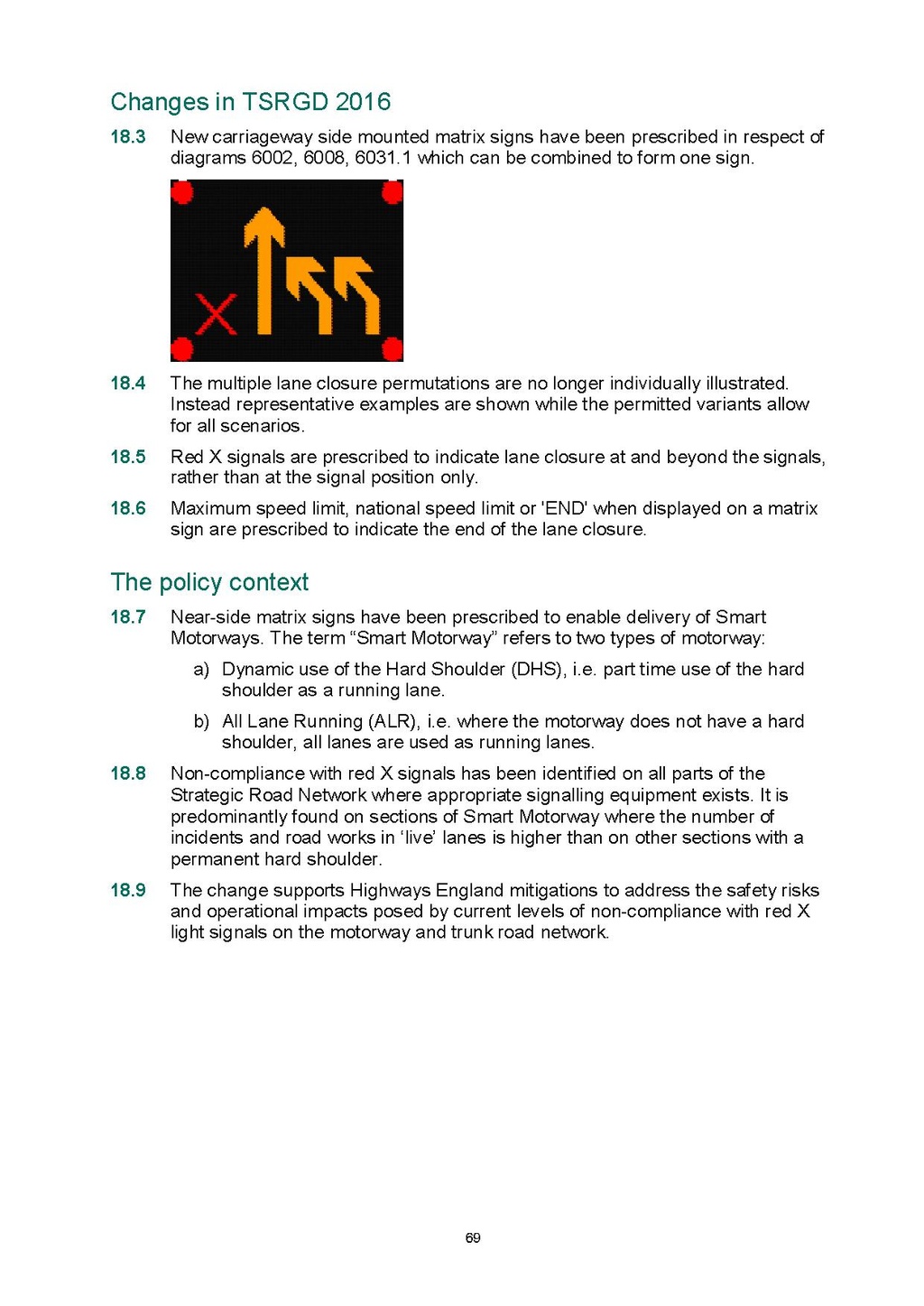There was a problem when proofreading this page.
Changes in TSRGD 2016 18.3
18.3
New carriageway side mounted matrix signs have been prescribed in respect of diagrams 6002, 6008, 6031.1 which can be combined to form one sign.
An image should appear at this position in the text. To use the entire page scan as a placeholder, edit this page and replace "{{missing image}}" with "{{raw image|DfT-circular-01-2016.pdf/69}}". Otherwise, if you are able to provide the image then please do so. For guidance, see Wikisource:Image guidelines and Help:Adding images. |
18.4
The multiple lane closure permutations are no longer individually illustrated. Instead representative examples are shown while the permitted variants allow for all scenarios.
18.5
Red X signals are prescribed to indicate lane closure at and beyond the signals, rather than at the signal position only.
18.6
Maximum speed limit, national speed limit or 'END' when displayed on a matrix sign are prescribed to indicate the end of the lane closure.
The policy context
18.7
Near-side matrix signs have been prescribed to enable delivery of Smart Motorways. The term "Smart Motorway" refers to two types of motorway: a) Dynamic use of the Hard Shoulder (DHS), i.e. part time use of the hard shoulder as a running lane. b) All Lane Running (ALR), i.e. where the motorway does not have a hard shoulder, all lanes are used as running lanes.
18.8
Non-compliance with red X signals has been identified on all parts of the Strategic Road Network where appropriate signalling equipment exists. It is predominantly found on sections of Smart Motorway where the number of incidents and road works in 'live' lanes is higher than on other sections with a permanent hard shoulder.
18.9
The change supports Highways England mitigations to address the safety risks and operational impacts posed by current levels of non-compliance with red X light signals on the motorway and trunk road network.
69
